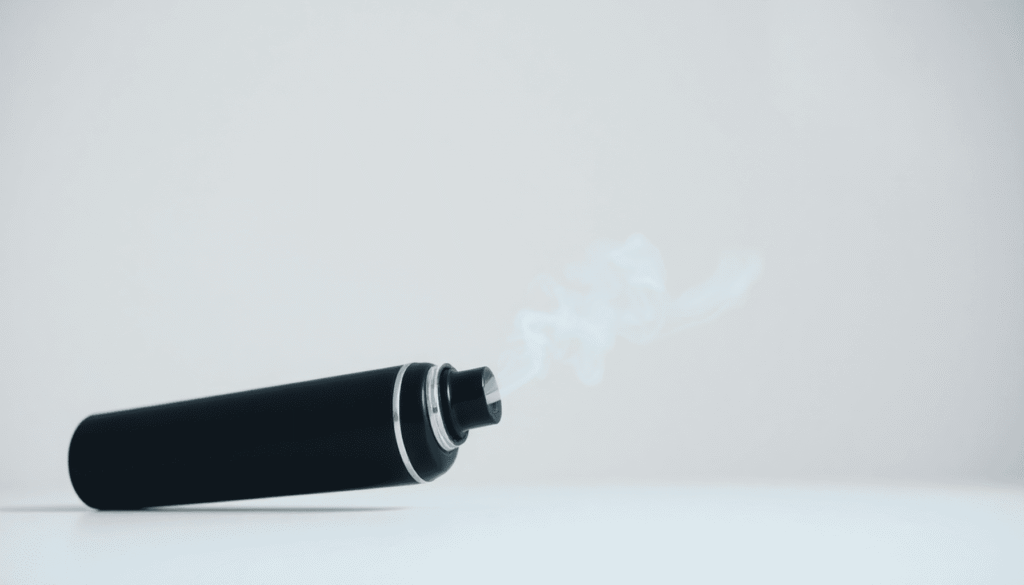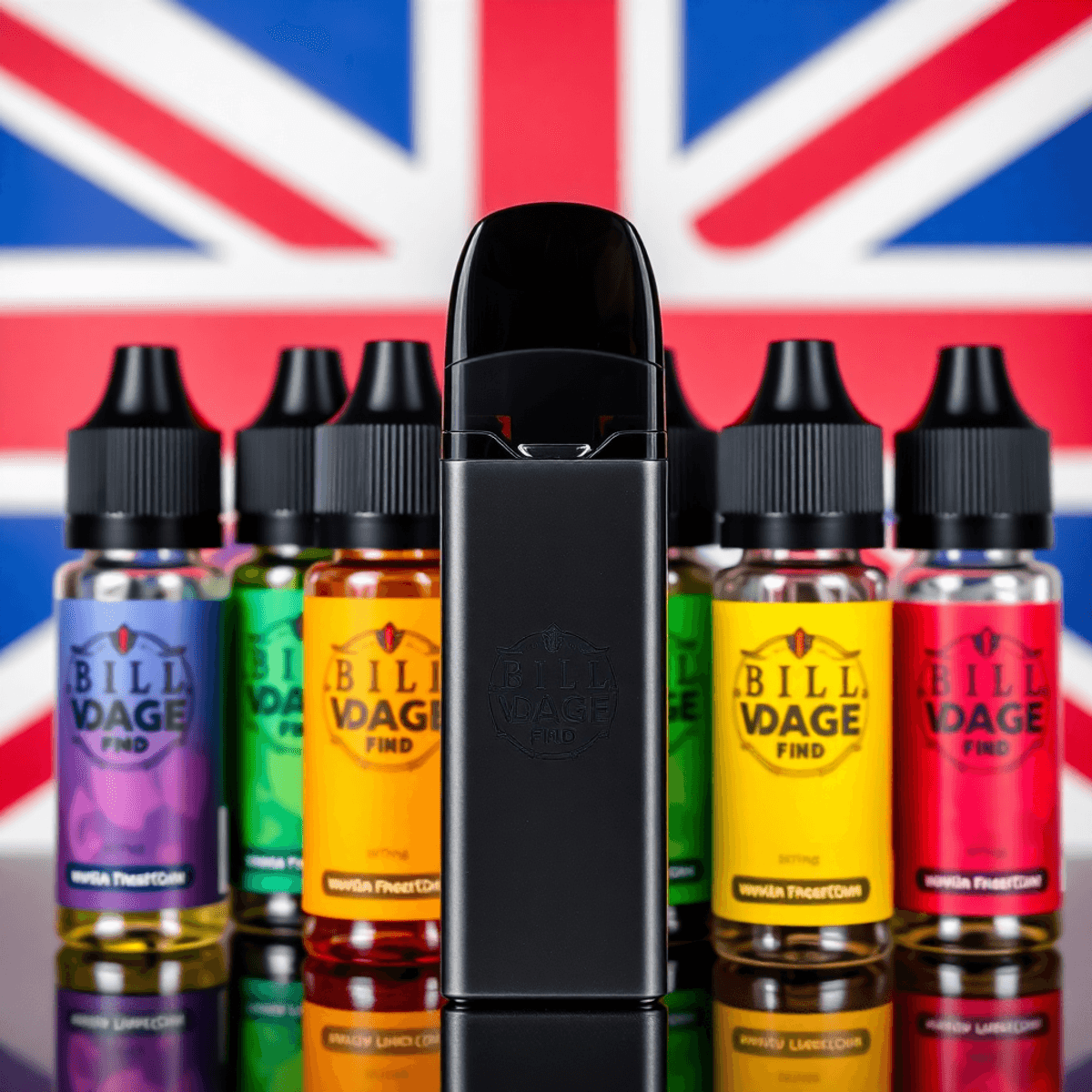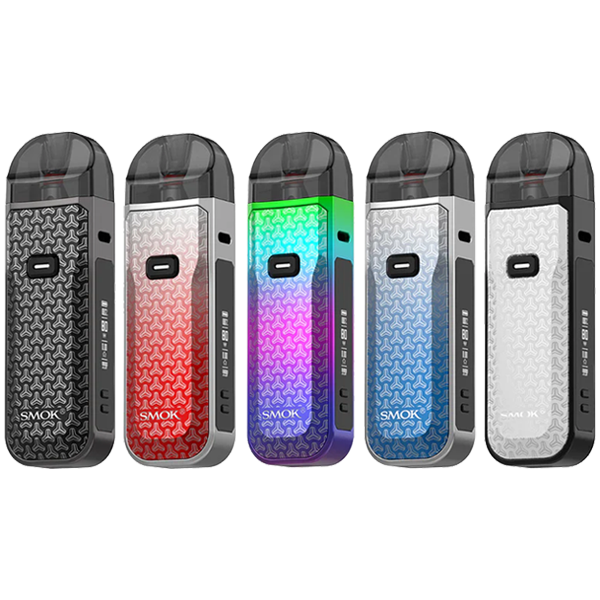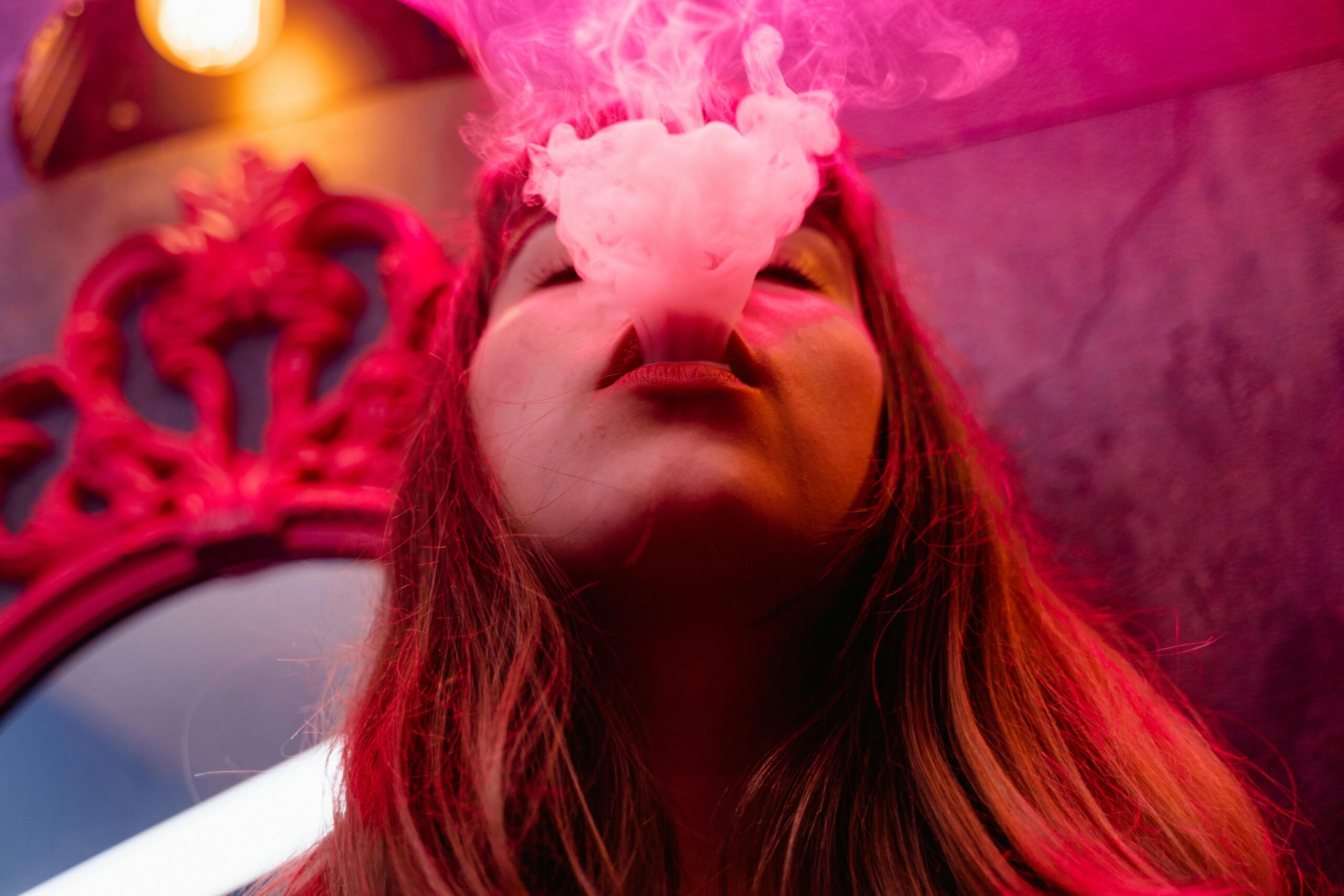TL;DR
Vaping doesn’t directly cause tiredness, but it can contribute to fatigue in several ways. Nicotine may give a short-lived energy boost followed by a crash, while disrupted sleep and dehydration from vaping can also leave you feeling drained.
As vaping continues to surge in popularity across the UK, many users find themselves asking: “Can vaping make you tired?” It’s a valid concern, considering millions of people now rely on e-cigarettes as an alternative to traditional smoking.
The relationship between vaping and fatigue isn’t straightforward. While some vapers report feeling energised after their daily puffs, others describe unexpected bouts of tiredness. These varying experiences have sparked discussions in vaping communities and raised questions about the impact of e-cigarettes on our energy levels.
Understanding how vaping affects our alertness and sleep patterns has become crucial. With 1 in 5 UK adults now using vape products regularly, the effects on daily energy levels can impact work performance, social activities and general well-being.
Whether you’re a seasoned vaper or just starting, knowing the potential link between vaping and tiredness can help you make informed decisions about your vaping habits. Let’s explore the science behind vaping fatigue and uncover what really happens when you reach for that e-cigarette.
Understanding Vaping and Its Components
Vaping devices heat a liquid solution to create an inhalable aerosol, delivering various substances into the body. The primary components in vape liquids include:
- Nicotine: Available in concentrations from 0mg to 50mg/ml
- Propylene Glycol (PG): Creates the ‘throat hit’ sensation
- Vegetable Glycerine (VG): Produces visible vapour clouds
- Flavourings: Natural and artificial compounds
Nicotine acts as a powerful stimulant in vape products, triggering the release of chemicals like dopamine and adrenaline in the brain. This substance binds to specific receptors, influencing heart rate, blood pressure and mental alertness.
Beyond these main ingredients, vape liquids contain additional chemical compounds that can affect bodily functions:
- Trace metals from heating coils
- Volatile organic compounds
- Carbonyls formed during the heating process
These substances interact with the body’s systems differently, potentially impacting energy levels, hydration and cellular function. The concentration and combination of these components vary significantly between products, creating diverse physiological effects.
The Stimulant Effect of Nicotine and Its Impact on Energy Levels
Nicotine acts as a powerful stimulant in the body, triggering a series of physiological responses. When you inhale nicotine through vaping, it quickly enters your bloodstream and binds to specific receptors in your brain and body.
Immediate Effects of Nicotine
The immediate effects include:
- A surge in heart rate by 10-20 beats per minute
- Increased blood pressure
- Release of adrenaline (the “fight or flight” hormone)
- Enhanced dopamine production
These reactions create a temporary boost in energy levels and alertness. Users often report feeling more focused, experiencing heightened concentration and having a subtle “buzz” sensation.
Duration of the Energy Boost
The short-term energy boost typically lasts 15-45 minutes, but regular use can lead to:
- Decreased sensitivity to nicotine’s stimulating effects
- Energy crashes once the stimulant effect wears off
- Increased tolerance requiring more nicotine for the same energy boost
How Your Body Adapts to Nicotine
Your body’s response to nicotine changes with repeated exposure. While occasional users might experience significant energy spikes, regular vapers often notice diminished stimulant effects. The initial “rush” becomes less pronounced and users might find themselves vaping more frequently to maintain their desired energy levels.
The Cycle of Dependence
The body’s adaptation to nicotine can create a cycle where users experience fatigue between vaping sessions, leading to increased dependence on nicotine for maintaining normal energy levels.
The Relationship Between Vaping, Sleep Quality and Daytime Tiredness
Vaping has a complicated effect on sleep patterns, leading to disrupted rest and feeling tired during the day. Research shows that nicotine from vaping messes with our natural sleep cycles, especially affecting REM (Rapid Eye Movement) sleep – the important stage that helps us remember things and process emotions.
How Vaping Affects Sleep
Regular vapers often experience:
- Delayed Sleep Onset: Nicotine’s stimulating effects make it harder to fall asleep, with some users reporting 30-60 minute delays in their usual bedtime.
- Reduced REM Sleep: Studies indicate up to 30% less time spent in REM sleep phases.
- Fragmented Sleep Patterns: More frequent awakenings during the night.
- Lighter Sleep Quality: Less time spent in deep, restorative sleep stages.
Daytime Effects of Poor Sleep
These sleep disruptions lead to noticeable symptoms during the day:
- Persistent mental fog
- Difficulty concentrating
- Increased irritability
- Physical lethargy
Timing Matters: When You Vape Affects Your Sleep
The timing of when you vape is crucial for your sleep quality. Vaping at night can be especially problematic because the effects of nicotine can last 2-3 hours after using it. Users who vape close to bedtime report having trouble with racing thoughts and restlessness when trying to sleep.
The Impact on Shift Workers and Irregular Sleepers
For shift workers or people with irregular sleep schedules, vaping can make existing sleep challenges worse. This creates a cycle of poor rest and increased dependence on nicotine for staying alert during the day.
Dehydration from Vape Ingredients: A Hidden Cause of Fatigue?
Many vapers experience unexplained tiredness without realizing that their e-liquid ingredients might be the culprit. The two main components in vape juice – propylene glycol (PG) and vegetable glycerine (VG) – are hygroscopic substances, meaning they absorb and hold water molecules from their surroundings, including your body.
When you inhale vape aerosols containing PG and VG, these substances:
- Draw moisture from your mouth, throat and airways
- Reduce saliva production
- Pull water from surrounding tissues
- Create a drying effect throughout your respiratory system
This constant moisture-drawing action leads to various dehydration symptoms:
- Dry mouth and throat
- Headaches
- Dizziness
- Increased fatigue and lethargy
- Difficulty concentrating
Your body needs proper hydration to maintain energy levels and cognitive function. When PG and VG repeatedly pull moisture from your system, it creates a mild but persistent state of dehydration that manifests as tiredness.
Research suggests that regular vapers need to increase their water intake by 2-3 glasses daily to counteract these dehydrating effects. Some users report significant improvements in energy levels after adjusting their hydration habits.
The severity of dehydration-related fatigue varies based on:
- Frequency of vaping
- PG/VG ratio in e-liquids
- Individual sensitivity to these compounds
- Current hydration habits
Chronic Vaping: The Long-Term Toll on Energy Levels
Regular use of nicotine-containing vapes creates a complex cycle of energy disruption in the body. Research from the Journal of Addiction Medicine reveals that chronic vapers experience persistent fatigue patterns distinct from occasional users.
The sustained impact on energy levels stems from several mechanisms:
- Nicotine Tolerance Build-up: Long-term vapers require increasing amounts to achieve the same stimulant effect, leading to energy crashes
- Disrupted Dopamine Regulation: Continuous nicotine exposure alters natural reward pathways, affecting motivation and energy
- Cellular Stress Response: Studies indicate that chronic exposure to vape aerosols may trigger cellular stress, contributing to physical exhaustion
A survey of 500 regular vapers conducted by the University of Cambridge found:
- 67% reported decreased energy levels after 6 months of regular use
- 72% noticed increased daytime drowsiness
- 58% required more caffeine to maintain alertness
The body’s adaptation to constant nicotine exposure creates a draining cycle – users vape for an energy boost, experience a temporary lift, then crash harder than before. This pattern intensifies with continued use, as documented in the British Journal of Clinical Pharmacology, where participants showed marked decreases in baseline energy levels after 12 months of regular vaping.
Heavy users often report needing their first vape within minutes of waking to combat morning fatigue, indicating the development of both physical and psychological dependence affecting natural energy patterns.
The Sedative Effects of THC Vaping: A Different Kind of Tiredness?
THC vaping creates a distinctly different experience from nicotine vaping when it comes to energy levels. While nicotine acts as a stimulant, THC interacts with the body’s endocannabinoid system to produce sedating effects.
Key differences in energy impact:
- THC activates CB1 receptors in the brain
- Triggers release of sleep-promoting chemicals
- Creates a relaxed, drowsy state
- Reduces mental alertness
- Slows physical reaction times
The sedative properties of THC stem from its ability to influence multiple brain regions responsible for relaxation and sleep regulation. Users often report feeling:
- Heavy limbs
- Mental fog
- Reduced motivation
- Deep physical relaxation
- Increased desire to rest
The strength of these drowsy effects varies based on:
- THC concentration
- Individual tolerance
- Time of day used
- Strain type (indica vs sativa)
- Method of consumption
The sedating impact of THC vaping tends to be more immediate compared to other consumption methods, as the compounds enter the bloodstream quickly through lung absorption. This rapid onset means users might experience sudden waves of tiredness, making it crucial to plan THC vaping sessions around daily responsibilities and activities requiring alertness.
Managing Tiredness Related to Vaping: Practical Tips for Balance
Quitting or reducing vaping often brings temporary fatigue as your body adjusts to decreased nicotine levels. This withdrawal phase typically peaks within the first 3-5 days, causing increased tiredness and decreased energy levels.
Essential strategies to combat vaping-related fatigue:
- Stay hydrated: Drink 2-3 litres of water daily, keep a water bottle nearby and monitor urine colour (pale yellow indicates good hydration).
- Maintain balanced nutrition: Eat regular, small meals, include complex carbohydrates for sustained energy and add protein-rich foods to stabilise blood sugar.
- Implement exercise routines: Start with 15-minute daily walks, incorporate light stretching exercises and try yoga or gentle cardio activities.
Quick energy-boosting techniques:
- Take power naps (10-20 minutes)
- Practice deep breathing exercises
- Get outside for natural light exposure
Creating a consistent sleep schedule helps regulate your body’s natural energy patterns during this adjustment period. Setting a fixed bedtime and wake-up time supports your body’s recovery process.
Many vapers report success with gradual reduction methods, allowing their bodies to adjust slowly rather than stopping abruptly. This approach often results in less severe fatigue symptoms and better management of energy levels throughout the day.
Strategies to Minimise Vaping-Induced Tiredness: Finding Your Balance Between Enjoyment And Well-Being
Making mindful adjustments to your vaping habits can significantly reduce tiredness while still enjoying your vape. Here’s how to strike that balance:
1. Gradual Nicotine Reduction
- Start with your current nicotine strength
- Decrease by 3mg/ml every 2-3 weeks
- Consider mixing your regular e-liquid with nicotine-free versions
- Track your energy levels as you reduce
2. Strategic Timing Makes a Difference
- Create a cut-off time 3-4 hours before bed
- Schedule vaping breaks during natural energy dips
- Space out sessions to maintain steady nicotine levels
- Avoid chain vaping which can lead to nicotine crashes
3. Smart E-liquid Choices
- Opt for 50/50 PG/VG ratios to reduce dehydration
- Try nicotine salts for smoother delivery
- Explore tobacco-free nicotine alternatives
- Keep multiple strength options for different times of day
4. Bedtime Routine Optimisation
- Switch to 0mg nicotine e-liquids in evening hours
- Use relaxing flavours like lavender or chamomile
- Reduce cloud production before bed
- Keep vaping equipment away from your bedroom
These adjustments help maintain energy levels while supporting quality rest. Many vapers report improved sleep patterns and reduced daytime fatigue after implementing these changes.
Conclusion
The question “can vaping make you tired?” has a clear answer – yes, it can. The relationship between vaping and fatigue operates through multiple mechanisms:
- Nicotine’s dual nature as both stimulant and sleep disruptor
- Dehydrating effects of vape ingredients
- Potential sleep cycle disruptions
- Long-term impacts on energy levels
Understanding these effects empowers vapers to make informed choices about their habits. Mindful vaping practices – such as reducing nicotine content, timing sessions appropriately and staying hydrated – can help maintain energy levels whilst enjoying vaping responsibly.
For those experiencing persistent tiredness, examining vaping habits could reveal opportunities for positive changes. The key lies in finding a personal balance that allows you to enjoy vaping whilst protecting your sleep quality and daily energy levels.
Remember: your well-being matters most. If fatigue becomes a consistent issue, consider adjusting your vaping routine or consulting a healthcare professional for personalised advice.
FAQs
Can vaping make you tired or cause fatigue?
Yes, vaping can lead to feelings of tiredness or fatigue. While nicotine initially acts as a stimulant increasing alertness, its impact on sleep quality and potential dehydration from vape ingredients like propylene glycol and vegetable glycerine can contribute to overall tiredness.
How does nicotine in vaping affect energy levels and heart rate?
Nicotine in vape products stimulates the release of adrenaline, which increases heart rate and temporarily boosts energy and alertness. However, this short-term stimulation can be followed by fatigue, especially with prolonged or heavy use.
Does vaping interfere with sleep quality and cause daytime tiredness?
Nicotine from vaping can disrupt sleep by reducing REM sleep and delaying sleep onset. Poor sleep quality resulting from these disruptions often leads to increased daytime tiredness among regular vapers.
Can the chemicals in vape liquids cause dehydration and contribute to fatigue?
Yes, ingredients such as propylene glycol and vegetable glycerine in vape liquids can cause dehydration when inhaled regularly. Dehydration is linked to feelings of lethargy and tiredness, making it a hidden factor in vaping-related fatigue.
What are the differences between nicotine vaping and THC vaping regarding tiredness?
Nicotine vaping typically has stimulating effects initially but can lead to fatigue over time due to its impact on sleep and hydration. In contrast, THC vaping has sedative properties that directly induce drowsiness and relaxation, causing a different kind of tiredness.
What practical tips can help manage tiredness related to vaping?
To reduce vaping-induced fatigue, consider lowering nicotine intake gradually or switching to nicotine-free e-liquids, especially before bedtime. Staying hydrated, maintaining a balanced diet, exercising regularly and avoiding vaping close to sleep time can also improve energy levels and sleep quality.




